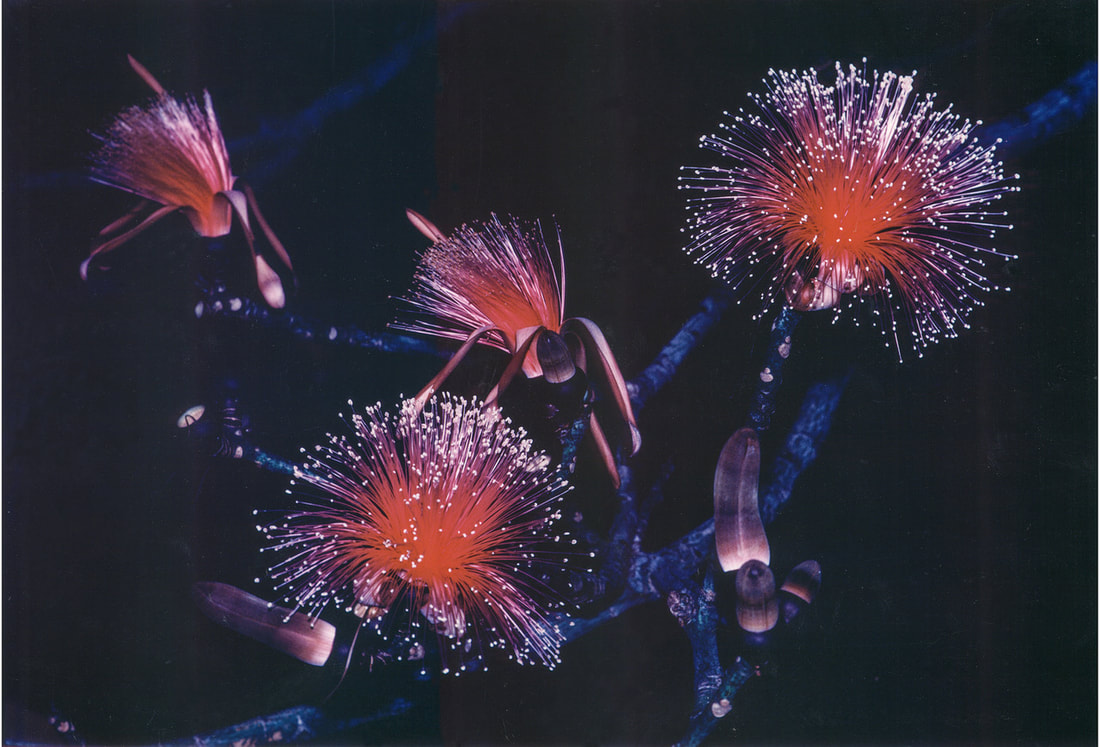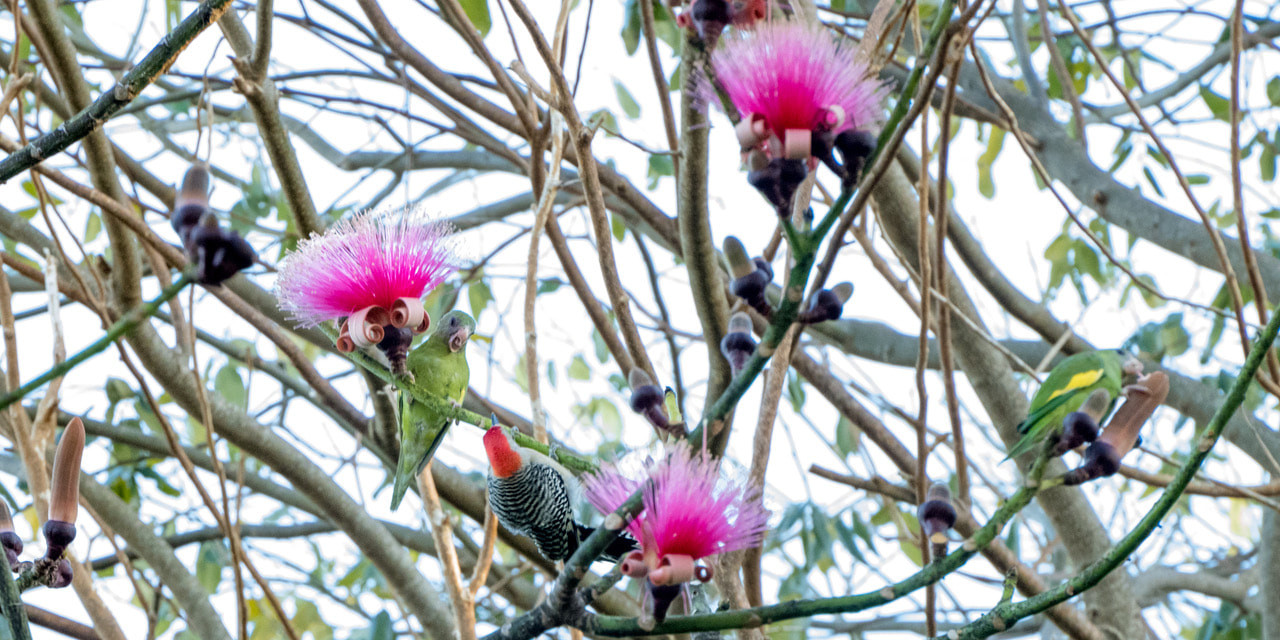|
In preparation for this journal I spent a lot of time being grateful for my mother-in-law Helen A. Ellis, who had the vision for the garden where I call home. When she arrived in 1968, she could see the ocean a half mile away from her patio. Her home was on the golf course at Ocean Reef, which began as a fishing camp, with a small lodge developed by Roger Baker beginning in 1945. Prior to its development, the area had been planted with key limes and orange groves. Due to its high elevation of nearly 14 ft. our land was nicknamed "nose-bleed hill,” and originally was the site of a hardwood hammock, full of mahogany, lignumvitae, stoppers, figs, mastic, milkbark, and gumbo limbo with large branches full of glistening tree snails. In the name of progress, everything was leveled to make way for homesites on stark, barren coral rock fill, Helen understood about landscape planning, but the Florida garden is so different than gardens up north. I still have her reference books, full of dog eared pages, notes, and clippings from the Miami Herald. For the last 50 years “Florida Landscape Plants” (John V. Watkins) and “Your Florida Garden” (John V. Watkins and Herbert S. Wolfe) are still the go-to manuals for Florida native and exotic plants. Helen asked a local gardener for some trees to plant. His name was "Joe Ficus". One day he arrived with three logs cut from tropical trees He put them in our poor, sandy, salty, coral rock soil. This wasn't an instant garden, it would take time and vision... thankfully Helen had a little of both. The stumps were Bombax (Pseudobombax ellipticum), African Tulip Tree (Spathodea campanulata) and Tiger's Claw (Erythrina livingstonia), trees that only grow in the tropics, and in the warmest locations in Florida, The gardener understood that if the cutting was planted and taken care of, that it would grow to a full size tree. That is the magic about South Florida... everything grows. Trees are an essential element in the Florida garden because they provide shade during our very hot and sunny days here. The moment you enter my driveway, the temperature drops at least 10 degrees. Large trees should be planted away from the house to minimize damage in case of storms, yet provide shade for energy conservation during the hot afternoon sun. All summer long the Bombax has dense green foliage, and It grows to 75 feet, and is about as wide as it is tall. It likes full sun, and is a perfect Keys plant. Late winter, this relative to the shaving brush tree, drops all its leaves, and reveals a tangle of green branches. Then flower buds begin to appear, looking a bit like an acorn, each day expanding outward, and elongating until about 5-6 inches long and about an inch wide. The Bombax (Bombacaeae) from the Greek for silk for contents of the seed pods, adds interest particularly when it is in full bloom in March and April when the spectacular flowers cause many to stop and take notice. The blooms when they emerge last just one day. It is called the "penis" tree by some. I rather equate it to a banana peel. When ready the bloom’s outer casing splits and curls, revealing a fireworks like burst of a flaming pinkish red bloom. If you are walking by and you don't happen to look up to see the blooms, you may be drawn in by the sound of bees buzzing overhead... a kind of pollinator block party. Scurrying from flower to flower a squirrel drinks from the nectar cup. Monk parakeets and red bellied wood peckers jockey for position on a flower, while a hummingbird zips in and out of the nectar filled cups. The landscape that Helen built, and I now steward is full of life. We can make a difference in our landscapes if we plant trees, shrubs and ground cover that provides essential elements for wildlife.
If someone were to ask, what was better before it was discovered? I'd say the Florida Keys before air-conditioning and the water pipeline. It had hardwood hammocks that sloped down to a natural mangrove shoreline that filtered runoff, protected it from storms, and at the same time was a nursery for baby fish, crabs and sea life, which provided food for the birds and bigger fish and so on. Our family wasn't the first to come to the Keys, and there will be scores after us, coming for whatever reason floats their boat, and they'll need docks and a place to lay their heads at night, places to shop, be entertained and relax... even play some golf... and so the story goes.
0 Comments
Leave a Reply. |
CAROL ELLIS
This photographic website provides me the opportunity for self-expression, for sharing Archives
May 2024
TAGS
All
|
© Copyright 2022. Carol Ellis Photography.
All Rights Reserved.









 RSS Feed
RSS Feed
